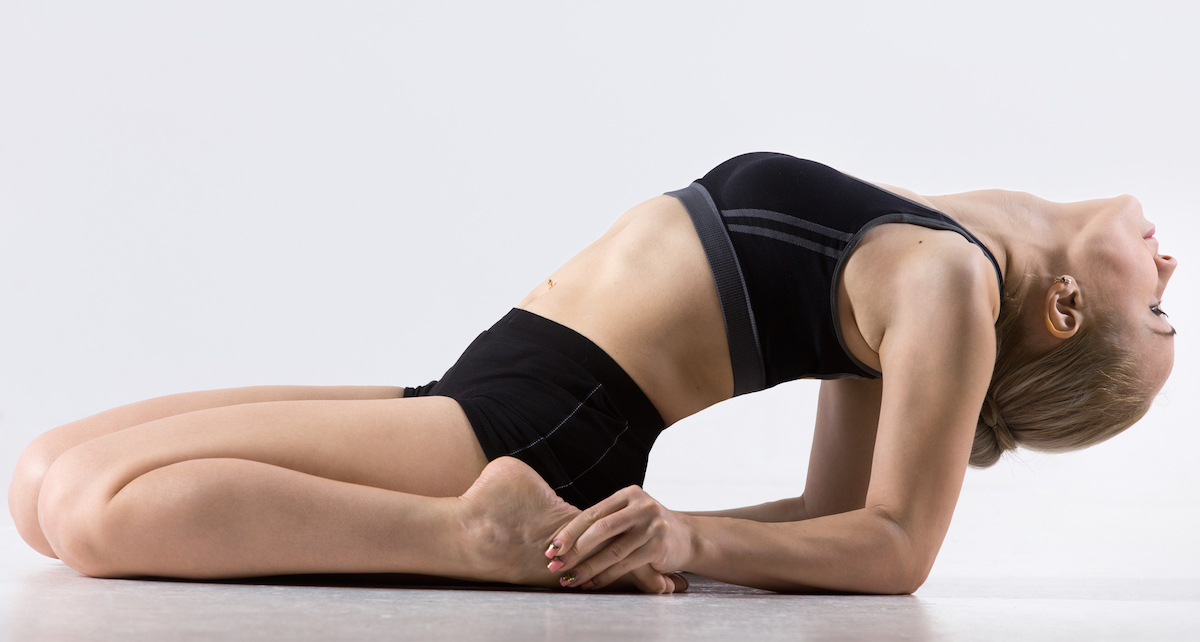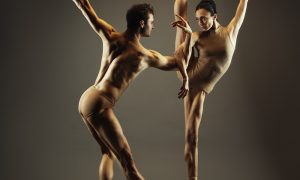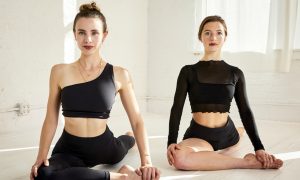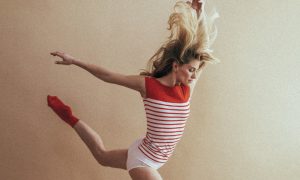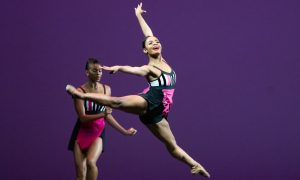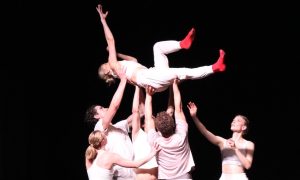Dance is an amazing, invaluable art form, but it can certainly take a heavy toll on the bodies of those who live and breathe it. In order to help their bodies recover from long hours in the studio and give-it-your-all performances, many dancers have developed unique regimes for caring for their hard-working body. Those include muscle rolling, baths with Epsom salts, and careful attention to what they eat and drink. Cross-training in other movement forms and somatics can also be very balancing and healing for tired dancers’ bodies.
Yoga, an ancient discipline of reaching toward wellness in a balanced way, is one such form. Although many in our culture think of a rigorous exercise form when they hear “yoga”, it can offer very relaxing aspects as well. These four restorative yoga postures can help break up lactic acid (often the culprit of muscular soreness), increase the flow of breath through the body, and gently bring relief to often overworked areas of dancers’ physical instruments. To prepare for these postures, lay out a yoga mat or find another comfortable area where you will have a good amount of space to stretch out. Gather objects to support you in the poses, such as pillows, blankets and yoga blocks (if available to you).
Kneepile Pose
To prepare for this posture, breathe in deeply, filling up from the bottom of your belly to the top of your chest – like filling up a glass with water. As you breathe out, focus on sitting deeply, releasing tension in your glutes (butt muscles) to feel grounded in your sitting bones. This established, cross one knee over the other, making a pile of your knees. If your knees are significantly higher than your hips, sit on a pillow, folded blanket or yoga block. Place your hands on your feet, and – if it feels right for you – take “yogi’s toe hold”, closing your thumb and index finger around your big toe. Enjoy feeling a stretch through your hamstrings and quadriceps. If you would like to go deeper, adding more stretch into your back and hips, fold your torso over your thighs at your hip creases.
In order to get a full, healthy stretch through your whole back, really make this a fold – just like if you were folding a towel or shirt; bring your lower belly to your upper thighs, and downward and out in that same order as you release with more breaths. Once you release your upper back into the stretch, you can also let your head hang. Its weight (about eight pounds on average) will cause gravity to gently increase the stretch. Breathe in, and feel your back long. Breathe out, and see if you might be able to soften and release deeper into the stretch. Stay here for five to 10 breaths, and repeat on the other side.
Diamond Pose
From there, uncross your legs and place the bottoms of your feet together, letting your knees fall out to the side. This opens up all the areas that the last posture did, but gets even deeper into the inner thighs. Just as with the last posture, you can fold forward (sequencing through the spine in the same way you did with the last posture) if you would like to go deeper. Inhale, feeling more length through your spine. Exhale, observing your spine releasing farther toward the floor. You can clasp your hands around your toes or take “yogi’s toe hold”. Enjoy the light, spacious stretch through your whole body. Roll up your spine vertebra by vertebra. Then flap your “butterfly wings”, bouncing your knees up and down a few times, in order to release any stagnant energy that might have built up while stretching.
(Reclining) Hero’s Pose
Sit on your heels, lengthening up through your spine and feeling your torso grow tall directly on top of your pelvis. If your quadriceps or heels feel sore or at all uncomfortable, sit on a folded blanket, pillow or yoga block. Maybe this is an enjoyable and beneficial stretch for you here. If you would like to go deeper, fall back to lean on your elbows. If those feel tender as you lean on them, you can place a prop (such as those mentioned) under them. If your body is telling you that it would enjoy going deeper, then release all the way unto your back.
As dancers, we tend to go for the deepest stretch that we can get. Instead, try to slow down your thoughts of striving for more here. See if you can place a pause in between each of those thoughts. Remember that you’re looking to find healing and rest for your body here. Challenge yourself to take the stretch at 50 percent, maybe not as deep as your body could go, and let that be enough. That could be exactly what your body, mind, spirit needs. Hold the posture for five to 10 breaths, or when your body tells you that it is complete.
Supported Fish Pose
From there, place two props so that one will fall under your upper back and one under your head when you lie back unto them. You can place your legs in any of the positions from the past three postures, or simply let them relax out wide and long (falling out to be externally rotated, as they naturally will if you release all effort). Lie back unto the props, letting your spine and front-body muscles release. The height and support of the props will gently open your heart and collarbone areas.
Sometimes rigorous, physically taxing dancing schedules can cause us to tense up and close these areas. Opening those areas back up can allow us to breathe more deeply, as well as approach everything we do with more graciousness, joy and love. Allow yourself to rest here for as long as your body, mind and spirit tell you that they need it. You’ve worked hard. You deserve this time to relax, release and restore.
By Kathryn Boland of Dance Informa.


